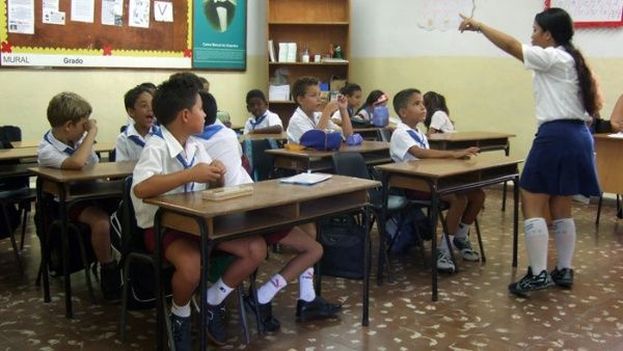
![]() 14ymedio, Mario Penton, Miami, 31 August 2017 — The red and white uniform has been washed and ironed for two days; next to it, a blue neckerchief. Eddy Alberto is eight years old and is starting the second grade at the Héroes de Yaguajay elementary school in the province of Sancti Spiritus. When he grows up, he wants to be a teacher and he has been asking his mother about the beginning of school for a week.
14ymedio, Mario Penton, Miami, 31 August 2017 — The red and white uniform has been washed and ironed for two days; next to it, a blue neckerchief. Eddy Alberto is eight years old and is starting the second grade at the Héroes de Yaguajay elementary school in the province of Sancti Spiritus. When he grows up, he wants to be a teacher and he has been asking his mother about the beginning of school for a week.
“On Monday, the tragedy begins again,” says Yanelis, Eddy Alberto’s mother, by telephone. “Last year they were three months without a teacher and according to what a teacher’s aid told me, this year they don’t have anyone either. They are going to put the librarian in charge of teaching them,” she adds with annoyance.
On September 4, more than 1,750,000 students will begin the new school year in Cuba. There will be 10,698 educational institutions opening, but some problems, such as teachers for all classrooms, continue to drag on from year to year.
According to official data from the National Office of Statistics and Information (ONEI), in 2016-2017 there were 248,438 classroom teachers, some 21,600 fewer than in 2008 when Raul Castro became president.
The country needs 16,000 more teachers to cover the deficit in all areas of education. In addition, between 10,000 and 13,000 teachers are on staff but out of the classroom for personal problems or maternity leave, as recently acknowledged by the Minister of Education, Ena Elsa Velázquez, in an interview with the magazine Bohemia.
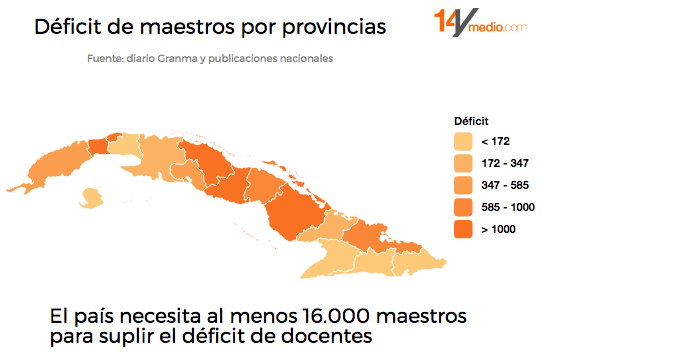
To remedy the exodus of teachers, the minister proposes several options: the hiring of teachers, the reinstatement of retirees, and the use of university students as teachers at other levels. Velázquez also said that her Ministry has created “a system of moral encouragement” for teachers. Some provinces, such as Guantánamo and Santiago de Cuba, will send teachers to others where the need is urgent, such as Matanzas and Havana.
Since taking office, first as interim president (2006) and then as president elected by the National Assembly (2008), Raul Castro substantially reduced the budget of the Ministry of Education. Expenditure on Education fell by 5 percentage points as a share of Gross Domestic Product, from 14% in 2008 to 9% in 2017, as it appears in the Budget Law approved last January by the National Assembly. During this period, 1,803 schools were also closed, according to official figures.
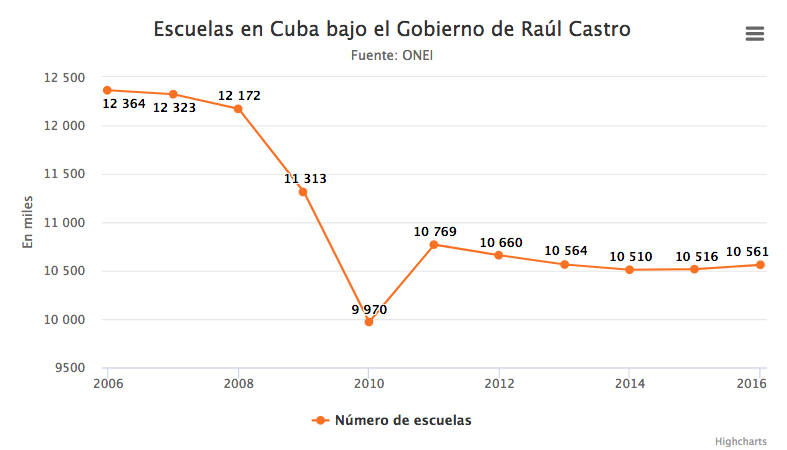
“The problem is that nobody wants to be a teacher because they pay them very little and they exploit them a lot,” says Yanelys.
Last year the Ministry of Education provided a salary increase of about 200 Cuban pesos for teachers with a greater teaching load. Even so, the average salary of an education professional is around 533 Cuban pesos, a little more than 20 dollars a month.
The reduction of resources has had a direct impact on the quality of the education system. According to the minister, more than 20% of school facilities are in a state between regular and bad.
The lack of encouragement to study education has been recognized by the same authorities, who saw with astonishment that only 58 undergraduates opted for three of the university teaching courses of the more than twenty that were offered in the province of Cienfuegos.
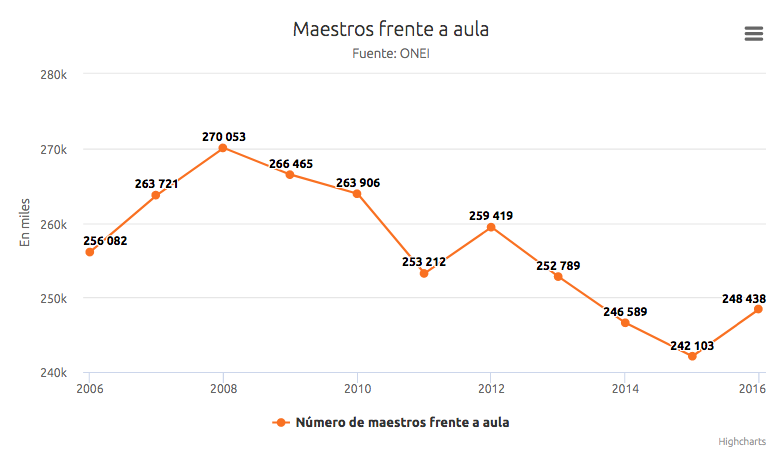
“For a long time, coverage and quality, as well as accessibility to the educational system, made Cuba one of the most lauded countries in Latin America,” explains the Cuban academic Armando Chaguaceda from Mexico.
However, he believes that many professionals have been lost “because there is not an adequate attention to the teacher.”
“They spent much more money on the training program for ‘emerging teachers’ than on simply recognizing the value of the work of thousands of self-sacrificing teachers,” he explains.
At the beginning of the 21st century, then-President Fidel Castro created the Teaching Schools for Emerging Teachers and Integral Teachers, which in just a few months prepared primary and secondary school teachers to make up for the exodus of professionals. After nearly a decade and thousands of graduates, the teacher deficit continues.
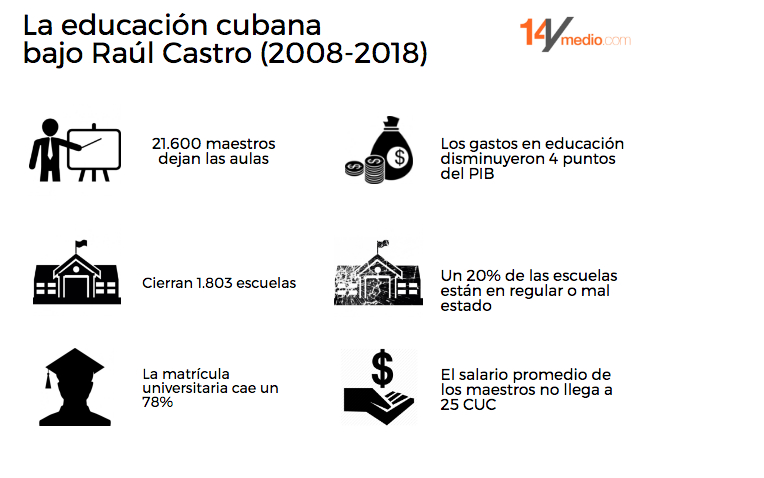
The director of the Center for Coexistence Studies, Dagoberto Valdés, acknowledges that the country is facing a major challenge: “The civility and ethical and civic education of children leaving schools is shameful. It is something that marks the culture of our people,” he says.
Convivencia, a think tank in the province of Pinar del Río, prepared last year, as part of its Thoughts for the Future of Cuba, a report with concrete proposals on education.
“There is a serious demographic problem in the country that is already reflected in educational enrollment. There are fewer and fewer people who enter the education system and graduate,” laments Valdés.
The number of graduates with university degrees has fallen as sharply as enrollment, which has fallen more than 78% in the last decade.
“We believe that a true educational project is needed that integrates both the school and the family and civil society, without ideological shading, but based on the cultural heritage of the nation, from [Father Félix] Varela to [José] Martí,” he dreams.
